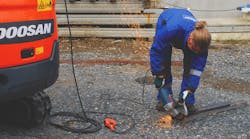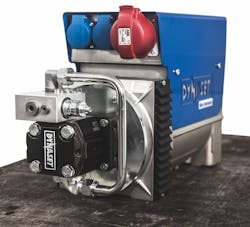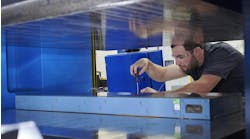Most of us think of power sources for driving pumps and compressors as either electric motors and gas or diesel engines. So it might seem that Dynaset Oy, Ylöjärvi, Finland, has it backwards. That’s because most of Dynaset’s products—such as electric power generators—are driven by hydraulics.
This should come as no surprise, though, because products are widely used at construction sites, mines, waste facilities, and other applications that make extensive use of mobile equipment using hydraulic systems. Dynaset’s products operate simply by connecting a few quick-acting couplings to an excavator’s or other machine’s hydraulic system. This makes the generator much smaller, lighter, and easier to handle than conventional generators, which contain a large and heavy gas or diesel engine, often larger and heavier than the generator itself.
However, this is nothing new for Dynaset; it’s been manufacturing its hydraulically powered machines for 30 years. What is new is that the machines have become quieter. Dynaset’s machines are driven by a hydraulic gear motor. Hydraulic gear motors, of course, are well known for transmitting a lot of mechanical power from a very small component. But gear motors are also notoriously loud. The high-frequency noise they generate can usually be heard over the lower rumble of a gas or diesel engine.
This poses a special problem for Dynaset. Because its generators don’t use a gas or diesel engine (a significant noise source), noise from the gear motor becomes more noticeable by becoming the only source of substantial noise. To solve this problem, Dynaset recently began integrating silent hydraulic motors into its wide range of products.
Quantifying Improvements
As an example of quieter operating, Dynaset’s HG 12kVa hydraulic generator’s sound pressure level dropped from 91 dB to 83 dB—both measured from a distance of 1 m. However, this is not the only improvement that makes the generator unit run quieter. A redesigned sound structure and improved frequency level also contribute to less operating noise. The new silent motors produce sound of a lower frequency and amplitude, which improves work environments and user ergonomics.
The new motors operate with lower mechanical friction for higher efficiency, reliability, and lower heat generation. They are available in standard and variable generators with maximum output from 3.5 to 20 KkVa, air compressors, and electromagnets.
For more information, visit Dynaset's website or call (800) 268-6797.



